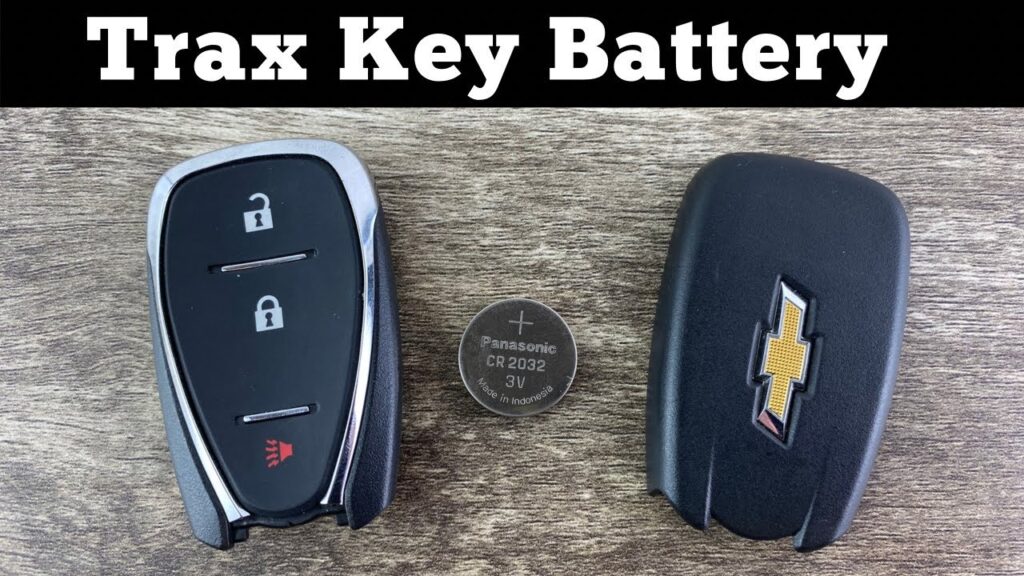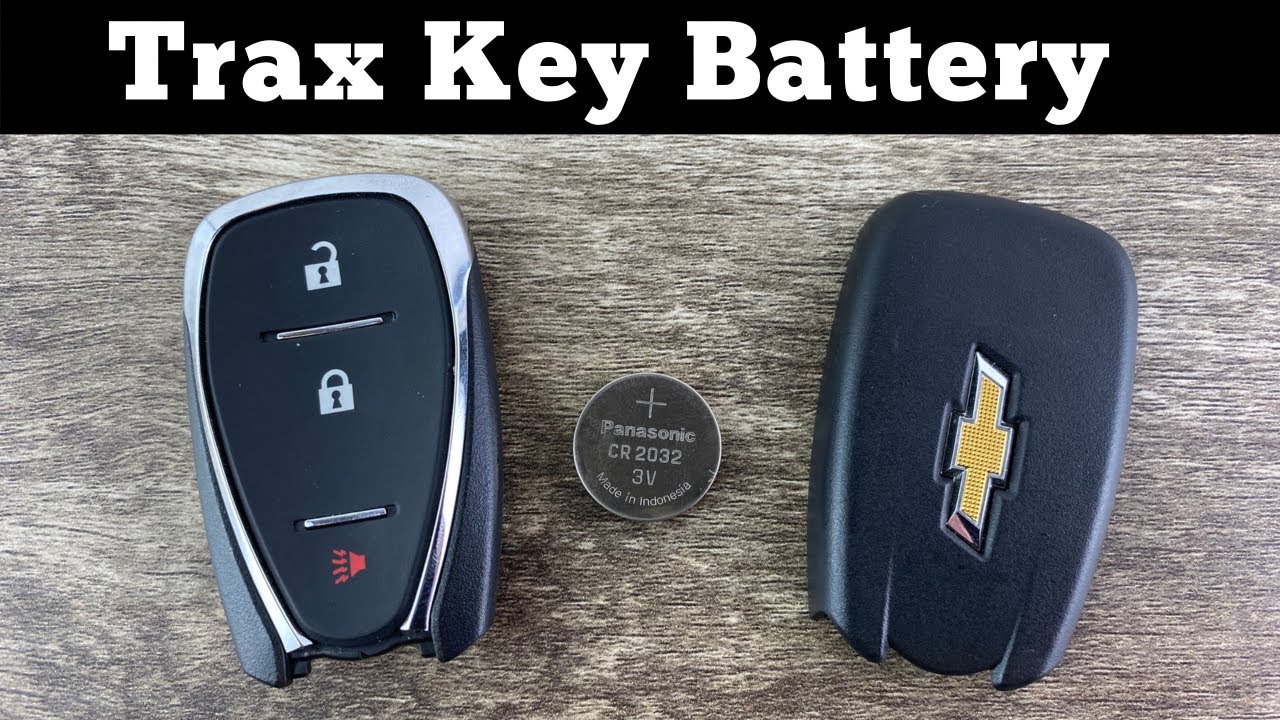
Chevy Key Fob Battery Replacement: A Step-by-Step Guide for Modern Drivers
The modern Chevy key fob is a marvel of engineering, granting drivers seamless access to their vehicles with the simple press of a button. From unlocking doors to starting the engine remotely, these fobs have become indispensable. However, like any electronic device, they rely on a battery, and a dead battery can quickly turn convenience into frustration. This guide provides a comprehensive, easy-to-follow approach to Chevy key fob battery replacement, ensuring you’re back on the road in no time. We’ll cover everything from the tools you’ll need to the specific steps for various Chevy models, ensuring a smooth and effective process.
Dealing with a malfunctioning key fob can be a real inconvenience. Imagine rushing to a meeting, only to find your key fob unresponsive. Or perhaps you’re stranded in a parking lot, unable to unlock your car. These scenarios highlight the importance of understanding how to maintain your key fob. This guide is designed to empower you with the knowledge and skills to handle Chevy key fob battery replacement with confidence, saving you time and potential frustration.
Understanding Your Chevy Key Fob
Before diving into the replacement process, it’s essential to understand the components of your Chevy key fob. Most modern key fobs consist of the following:
- The Key Fob Housing: The outer casing that protects the internal electronics.
- The Circuit Board: The electronic heart of the fob, responsible for transmitting signals.
- The Buttons: Used to lock/unlock doors, start the engine, and activate other features.
- The Battery: The power source that fuels the fob’s functionality.
Different Chevy models may have slightly different fob designs, but the core components remain the same. Recognizing these components will help you navigate the replacement process more effectively. The batteries used in Chevy key fobs are typically small, coin-cell batteries. Common types include CR2032, CR2025, and CR2450, although the exact type varies depending on the year and model of your vehicle. Knowing the correct battery type for your specific Chevy key fob is crucial.
Tools You’ll Need for Chevy Key Fob Battery Replacement
Fortunately, replacing the battery in your Chevy key fob doesn’t require specialized tools. Here’s a list of what you’ll need:
- New Battery: The correct type for your key fob (more on this below).
- Small Flathead Screwdriver or Pry Tool: For opening the key fob housing.
- Optional: A soft cloth to protect the fob from scratches.
The most important item on this list is the new battery. Before you begin, it’s crucial to identify the correct battery type for your Chevy key fob. You can usually find this information in your owner’s manual or by checking the battery itself (if you can access it). Alternatively, you can consult online resources or visit an auto parts store to determine the correct battery for your vehicle’s year and model. Using the wrong battery can damage your key fob.
Step-by-Step Guide: Replacing Your Chevy Key Fob Battery
The following steps provide a general guide for replacing the battery in most Chevy key fobs. However, specific procedures may vary slightly depending on your vehicle’s model and year. Always consult your owner’s manual for model-specific instructions.
- Gather Your Supplies: Ensure you have the new battery, the flathead screwdriver or pry tool, and a soft cloth (optional).
- Locate the Key Fob’s Seam: Look for a seam around the edge of the key fob housing. This is where you’ll insert the screwdriver or pry tool.
- Open the Key Fob Housing: Carefully insert the screwdriver or pry tool into the seam and gently pry the housing apart. Be cautious not to apply excessive force, as this could damage the fob. Some fobs may have a small notch or button that needs to be pressed to release the housing.
- Remove the Old Battery: Once the housing is open, you’ll see the battery. Use the screwdriver or pry tool to gently pry the battery out of its compartment. Avoid using excessive force.
- Insert the New Battery: Insert the new battery into the compartment, ensuring the positive (+) and negative (-) terminals are correctly aligned. Check the battery compartment for markings indicating the correct orientation.
- Close the Key Fob Housing: Align the two halves of the key fob housing and press them together until they snap shut.
- Test the Key Fob: Test the key fob by pressing the buttons to lock/unlock the doors and start the engine (if applicable). If the fob is working correctly, you’re done!
If the key fob still doesn’t work after replacing the battery, there might be other issues. In this case, you may need to reprogram the key fob or consult a professional. [See also: Key Fob Troubleshooting Guide]
Identifying the Correct Battery for Your Chevy Key Fob
As mentioned earlier, using the correct battery is crucial for the proper functioning of your Chevy key fob. Here’s how to determine the right battery type:
- Check Your Owner’s Manual: The owner’s manual is the most reliable source for information about your vehicle’s key fob and battery type.
- Look at the Old Battery: The old battery itself will usually have the battery type printed on it (e.g., CR2032).
- Consult Online Resources: Websites like YouTube often have videos demonstrating Chevy key fob battery replacement for specific models, including the correct battery type.
- Visit an Auto Parts Store: Auto parts stores can help you identify the correct battery for your vehicle based on its make, model, and year.
Common battery types for Chevy key fobs include CR2032, CR2025, and CR2450. Always double-check the battery type to ensure compatibility.
Troubleshooting Common Issues After Battery Replacement
Sometimes, even after replacing the battery, your Chevy key fob may not function correctly. Here are some common issues and troubleshooting steps:
- Key Fob Not Working:
- Check Battery Orientation: Ensure the battery is inserted with the correct positive (+) and negative (-) terminals aligned.
- Try a Different Battery: The new battery may be defective. Try a new, fresh battery.
- Reprogram the Key Fob: Some key fobs may need to be reprogrammed after battery replacement. Consult your owner’s manual for reprogramming instructions.
- Key Fob Buttons Not Responding:
- Check for Physical Damage: Inspect the key fob for any physical damage, such as cracks or water damage.
- Clean the Contacts: Gently clean the battery contacts inside the key fob with a cotton swab and rubbing alcohol.
- Remote Start Not Working:
- Check Vehicle Settings: Ensure that the remote start feature is enabled in your vehicle’s settings.
- Consult a Professional: If the remote start feature still doesn’t work, consult a qualified technician.
If you’re experiencing persistent issues, it’s best to consult a professional locksmith or your local Chevy dealership. They have the expertise and equipment to diagnose and resolve more complex key fob problems. They are also well-versed in Chevy key fob specific issues.
Preventive Measures and Maintenance Tips
While Chevy key fob battery replacement is a relatively simple task, taking some preventive measures can help prolong the life of your key fob and battery:
- Avoid Extreme Temperatures: Extreme heat or cold can damage the key fob’s internal components and shorten battery life.
- Protect from Moisture: Keep your key fob away from water and other liquids.
- Regularly Inspect the Key Fob: Check your key fob periodically for any signs of damage, such as cracks or loose buttons.
- Replace the Battery Before it Dies Completely: If you notice the key fob’s range decreasing or if the buttons become less responsive, it’s a good idea to replace the battery proactively.
Following these tips can help extend the life of your key fob and minimize the need for frequent battery replacements. [See also: Key Fob Care and Maintenance Guide]
When to Seek Professional Help
While Chevy key fob battery replacement is often a DIY task, there are situations where seeking professional help is advisable:
- Persistent Key Fob Malfunctions: If you’ve replaced the battery and the key fob still doesn’t work, there may be a more serious issue.
- Physical Damage to the Key Fob: If your key fob is cracked, broken, or water-damaged, it’s best to have it professionally inspected.
- Difficulty Reprogramming the Key Fob: If you’re unable to reprogram the key fob after battery replacement, a professional can assist.
- Lost or Stolen Key Fob: If you’ve lost or had your key fob stolen, you’ll need to contact your local Chevy dealership to have the fob deactivated and a new one programmed.
A qualified locksmith or your local Chevy dealership can provide expert diagnosis and repair services, ensuring your key fob functions correctly. They have the specialized tools and knowledge to handle complex key fob issues. [See also: Finding a Reliable Automotive Locksmith]
Conclusion: Keeping Your Chevy Key Fob Functioning Smoothly
Replacing the battery in your Chevy key fob is a straightforward process that can save you time and money. By following the steps outlined in this guide, you can easily keep your key fob functioning correctly. Remember to identify the correct battery type, use the appropriate tools, and take precautions to protect your key fob from damage. With a little knowledge and effort, you can ensure your Chevy key fob remains a reliable and convenient tool for years to come. Now you’re equipped to handle Chevy key fob battery replacement like a pro!
From understanding the components of your key fob to troubleshooting common issues, this guide provides a comprehensive resource for all your Chevy key fob needs. By taking the time to learn about your key fob and how to maintain it, you can avoid unnecessary frustration and ensure a seamless driving experience. The process for Chevy key fob battery replacement is simple when you follow the instructions carefully.


